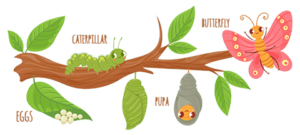What Is IPM?
Integrated Pest Management (IPM) is a science-based approach to solving any pest problem—be it a weed, a tree-damaging insect or fungus, or even deer browsing your prized roses. IPM uses our knowledge of pest biology to disrupt its life cycle or prevent it from doing damage. Rather than annihilating every bug, plant disease, or weed, IPM aims to keep pests and pest damage at acceptable levels. IPM takes a multi-pronged approach to suppress pests over the long-term, rather than a quick but temporary fix. Anyone—from backyard gardeners and homeowners, to farmers and pest management professionals—can use IPM to control pests while minimizing pesticide use. It is not a strict set of rules—rather IPM is based on common-sense practices that may be adapted and adjusted to fit the situation and need. Whether it’s to create safer playing conditions at your local park or protecting your garden from insect pests, IPM provides solutions for every pest problem.
Some IPM Methods
While specific tactics vary, they share certain underlying principles including:
- Prevention
- Identification of the Culprits
- Selection of Appropriate Anti-Pest Tactics Based on The Pests’ Biology and Habits
- Follow-Up Observation to See If the Tactics Were Effective
Incorporating these habits into regular gardening and landscape maintenance helps to avoid pest ‘outbreaks’ and the need for expensive rescue treatments or replacement of plants.
Some examples of IPM methods include:
- Regular and timely inspection of trees and gardens for evidence of damage or disease
- Specific identification of the suspected offender
- Mowing lawns at the highest setting to favor grass and discourage weeds
- Pruning out a diseased tree limb
- Installing a deer fence or placing insect-proof coverings over vegetable seedlings
- Planting flowers to attract and support beneficial insects and spiders
- Trapping or hand picking insect pests
- Targeted and strategic use of pesticides only as needed
Read More at the University of Maine Cooperative Extension.
Where is IPM Used?
Anywhere pests occur, IPM practices can be applied. From homes, schools, and restaurants to farms and home gardens, any environment that struggles with damage from pests can benefit from IPM.
IPM Focuses on Prevention First and Selecting an Appropriate Control Strategy ONLY When Control is Needed

Is it really a pest? You decide! For example, the caterpillar taking a few bites of parsley or carrot tops in your garden may soon metamorphose into a beautiful and harmless butterfly. On the other hand, leaf beetles devouring your entire planting of lilies may be too much to tolerate, even for an ecologically minded gardener. Before taking any control action, make sure the culprit hasn’t pulled a dine-and-dash and consider the full range of IPM control tactics at your disposal. IPM can include Cultural Practices (plant choice, mulching and fertilizer, harvest techniques, for example), Biological Controls (by natural enemies), Physical Controls (such as fencing, traps, physical removal, or heat or cold treatment) and Pesticides (a targeted application of a product selected on the basis of its expected effectiveness and risk profile (to people, pets and the environment). Sometimes you may just need to replace the plants that have repeat offenders year after year.
Learn more about the fundamental principles of IPM




